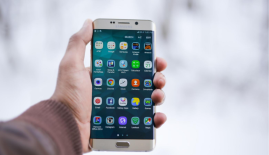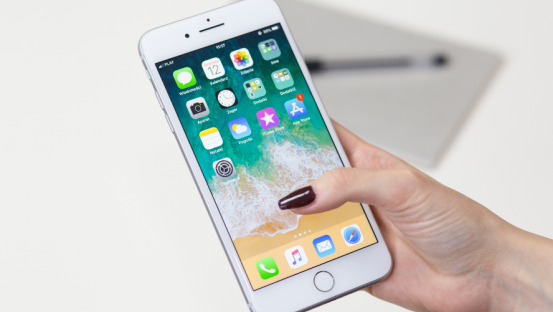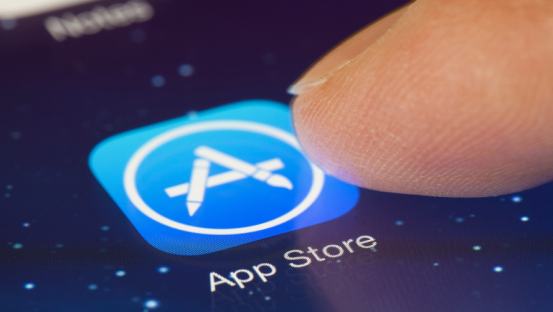How to Use Smartphones Effectively in Training Workshops

The use of mobile learning has been taking center stage over the past few years. It’s a learning format that makes training, both inside the workshop and remotely, highly flexible. They are becoming indispensable on the training floor.
In this article, we show how using personal devices is the way forward, and offer practical tips for incorporating them into your sessions.
According to recent research by the eMarketer, the number of smartphone users worldwide will surpass 2 billion in 2016. By 2018, they have estimated that over one-third of consumers worldwide, or more than 2.56 billion people will be using smartphones, both for professional and personal use.

Integrating smartphones into your training session is not just trendy - in the future of workshop training it will become more and more essential. Learning how to incorporate them into your training sessions: whether through learning apps or videos searches, will be key for trainers looking to progress with the industry.
Learning Apps
Smartphones allow attendees to easily get involved with the material through learning apps that can be used to share content and information with attendees.
From creating lesson plans to communicating with attendees outside the workshop, these apps can help trainers utilize smartphones effectively in their workshops. Curious about which apps to start with? Here are our top six suggestions:
- Pocket: The Pocket app allows trainers to save, and more importantly share articles, videos, and other online content that are relevant to their specific workshop.
- Udemy: This app allows trainers to easily build MOOCs for their workshops, which can be used before or after the workshop.
- Educreations: Educreations is a simple course content creation tool for iPads. The whiteboards are not optimized for real-time, but the app does allow you to create and record sessions, videos, and images which can then be shared with attendees.
- Blackboard: This all-inclusive app allows trainers to manage their courses and workshops with a customizable open architecture. From calendars to learning modules to chatrooms, this app is extensive and can be used in a lot of different ways.
- Skillpill: This app allows trainers to create bite-sized training videos that can be easily shared with attendees.
- Articulate Storyline 2: This authoring tool is incredibly easy to use. It helps trainers create and share interactive, multimedia content quickly.
Apart from the variety of learning apps available to trainers, there is a multitude of ways you can use smartphones in your workshop with tools you and your attendees are already accustomed to using.
From silent discussion to short films, using smartphones in workshop sessions adds a new level of connectivity between trainers and attendees. Read our list below for more ideas and practical tools you can use in your workshop.

Share and discuss ideas
-
Google Drive: Get to know your attendees by having them complete a Google Form, you can assess how much they know about the topic before the workshop so that you can customize the session to the needs of the group.
-
Have attendees assess their peers’ ideas by collaborating on a Google Doc or Sheet. Allow them to view real-time constructive criticism. Afterwards, polish up the spreadsheet or document and share with attendees on the big screen.
-
After the session, you can easily allow the attendees assess and offer feedback on the session through a simple Google Form sheet
-
- Project a real-time brainstorming, audience polling, Q&A visual with Polleverywhere.com which works even with ‘classic’ mobile phones through text messages.
- Have a “silent discussion”, that is, a live chat in which all classroom participants can take part via Todaysmeet.com or Twitter. Use a Twitter hashtag to augment the in-class lesson or extend the conversation after class.
- Many trainers tend to distribute material at the beginning or at the end of the workshop. Instead of photocopying large amounts of paper and handing them out, trainers can use their smartphones to easily share documents. Write and share with all participants via apps such as My Writing Spot, Evernote or Google Drive.
Video
- Create videos: videos can be used by participants to record discussions or breakout sessions, that can later be referenced in the workshop or at a later date. Lean on Videolicious to easily create short, high quality videos.
- Watch relevant material: ask the attendee to share the links during the workshop and show relevant videos within a few seconds. This is invaluable for making connections: for instance when an attendee poses the question, “Have you seen the video that….?” Being able to see and share the video solidifies the connection.
- Augment content with great videos: share great material from Vimeo or YouTube. You can always show shorten clips instead of the whole video by using a service like TubeChop.
Audio
- Smartphones provide attendees with the ability to record explanations or sections of the session. These recordings can be referred to later on and can save a great deal of time instead of writing.
- Add audio and explanations to pictures and invite comments with Audioboo. Think of it as the speaking version of Twitter. The app is excellent for interviewing, reporting, and documenting.
- Have attendees listen to related podcasts before or after the workshop. You can create and share your own podcasts with SoundCloud, or by sending attendees a simple voice recording via email.

Photos
- In many cases, attendees find it easier to understand material when there is a correlating image. A simple and effective activity can be to have the attendees quick search and share an image on their personal device which relates to the content.
- Take photos: smartphones can be used as cameras to illustrate work and presentations. Photos from the workshop can be great for referencing the session at a later date, and can help attendees remember the content effectively.
- Have attendees create an informative collage of pictures that address a particular area of concentration. PicCollage can be used to quickly create great collaborative images right on the attendee’s smartphone.
Lastly, don’t forget that a smartphone is an amazing tool for all kinds of practical needs. You can use the Stopwatch/Timer/Clock to manage workshop session times (and there is even an app for a realistic-looking sand timer!).
Also, the Dictionary/Thesaurus/Translator apps can help you get creative with your word usage in the sessions, while an app like Google Voice Translate can instantly break down language barriers.
Find out more about being listed as a trainer on SpeakerHub here.
There are dozens of clever ways to integrate smartphones with training sessions. Do you already use smartphones or personal devices in your workshops? What has been most effective? We’d love to hear your opinions and advice, feel free to contact us any time.









